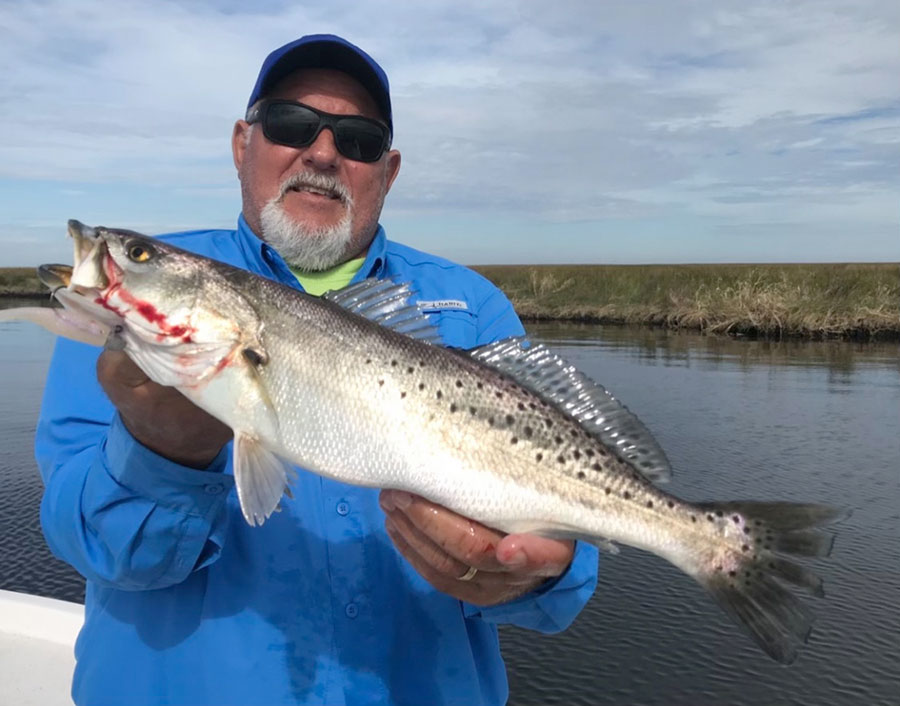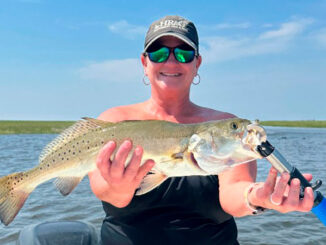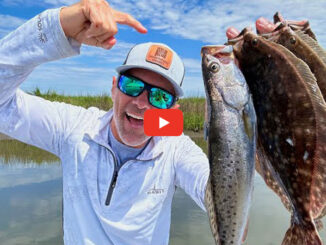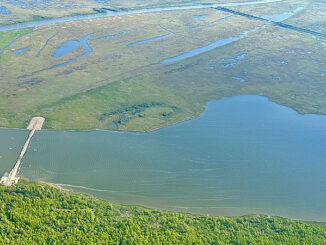
February and March are usually the months with the lowest water temperatures, and according to my old friend Capt. Mike Gallo (504-259-3474), water temperature is the key to winter success, particularly if specks are your target.
“During the winter months, the first thing I do when I put my boat in the water is to check the water temperature,” he said, “and that’s because, the colder it is, the more lethargic the trout are.”
Watch the temperature
Typically, our southeastern Louisiana water temperatures will range somewhere in the 50’s.
“If the temperatures are in the low 50’s, say 50-53 degrees, you’re going to have to fish the bottom, slow and deep,” Gallo said. “If the temperature ranges between 54-56, you’ll want to look for your fish to still be in deeper water, but suspended about 5-6 feet down, and you can fish them with plastics tightlined, or live bait if it’s available under a sliding cork. If the water temperature is above 57 degrees, then anything goes. You’re liable to find them anywhere; shallow along ledges, shorelines or reefs, mid-range in the water column or deep on the bottom. On those days you can try tossing plastics or live bait, tightlined or under corks, and even topwater baits.”
Gallo said one of the reasons the Chalmette area is so good in the winter is because the water is deeper and significantly warmer there.
“Perhaps because of the massive concrete wall that might actually work like a heater, absorbing the heat of the sun like a giant concrete solar panel, and transmitting the warmth down into the water column,” he said.
It’s entirely plausible if you think about. We know that areas where there are rocks along the shoreline, shells on the bank or shallower oyster reefs, those areas attract fish even in winter, for both the food sources they attract and warmer water temperatures.
“I know for a fact, the water around the Wall is warmer by 4-5 degrees than water the same depth in the lake,” Gallo said. ”And that 4-5 degrees makes a significant difference to the fish, especially the speckled trout.”
Gallo’s advice
Fish along the Wall, on the bottom, using a drop-shot rig with a 1-ounce sinker, with live or dead bait or plastic, somewhere where the current isn’t too strong. Gallo said he likes the Berkley scented curly tail plastics on his drop-shot rig.
Other areas produce also; along the rocks of the MRGO, the Air Products Canal, the shell bank along the ICW; or wherever you find deeper water that isn’t ripping with current, he said.
Gallo also suggested using smaller sized baits in the colder months.
“The old adage, ‘big bait equals big fish’ doesn’t always hold true when fishing for specks in the winter,” he said. “I often use crappie sized curly tail plastics on my drop shot rigs.
“Remember, the bite is often very light, and can almost be imperceptible. So give yourself whatever advantage you can. Fish slow off the bottom with a sensitive rod and lighter line. I spool up with 10-pound, 100% fluorocarbon for winter fishing.”
Gallo said this isn’t like spring or fall fishing.
“The action can be slower, even much slower,” he said. ”Sometimes you just have to grind it out, and be happy to take home whatever mixed bag of fish you get.”


